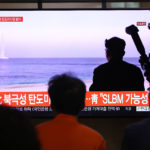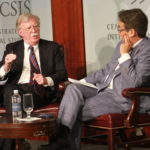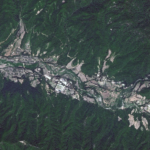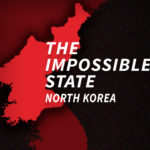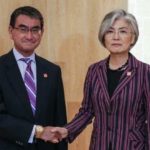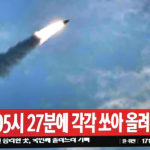October 2, 2019, by Joseph S. Bermudez Jr., Victor Cha and Dana Kim—
Around 7:11 am on October 2 (KST), North Korea launched what may have been a submarine launched ballistic missile (SLBM) from waters northeast of the Wonsan, Kangwon Province area into the sea between Korea and Japan. The last Beyond Parallel report on the Sinpo South Shipyard indicated the possibility of ongoing preparations for a launch.
September 30, 2019—
On September 30, 2019, the Honorable John R. Bolton, National Security Advisor (2018-2019) and U.S. Ambassador to the United Nations (2005-2006), delivered the keynote address at our JoongAng Ilbo-CSIS Forum 2019: Navigating Geostrategic Flux in Asia: The United States and Korea.
September 25, 2019, by Joseph S. Bermudez Jr.—
Collected eleven months after the image provided in Part 4 (December 10, 1967) this November 21, 1968 KH-4B image of the Yongbyon Nuclear Research Center does not show any significant developments in the operations (with the IRT-2000 research reactor), support or administrative/laboratory areas. It does, however, show continuing development within the village of Sang-dong and the early stages of construction for a new road bridge across the Kuryong-gang in the Pungang-ni area that will connect the support area to the opposite side of the river. Taken as a whole, these developments represent both continuation of a first-phase construction project for the facility and the earliest infrastructure development stages within a longer-term plan for future expansion.
September 6, 2019, by Joseph S. Bermudez Jr. and Victor Cha—
New CSIS Beyond Parallel imagery shows the undeclared Kumchon-ni missile operating base. This is the first comprehensive public description of the base. During wartime, it is reportedly tasked with striking southern Japan and, to a lesser degree, throughout South Korea.
August 28, 2019, by Joseph S. Bermudez Jr. and Victor Cha—
New Beyond Parallel imagery (August 26, 2019) of Sinpo South Shipyard suggests circumstantial evidence of the construction of a new ballistic missile submarine and preliminary evidence indicates possible preparations for a test... New Beyond Parallel imagery (August 26, 2019) of Sinpo South Shipyard suggests circumstantial evidence of…
August 23, 2019—
In this episode, Andrew and Dr. Victor Cha welcome a special guest. Dr. Katrin Katz is the Adjunct Fellow in the Office of the Korea Chair at CSIS. From 2007 to 2008, Dr. Katz served as director for Japan, Korea and Oceanic Affairs on the U.S. National Security Council. They discuss various factors of the on-going South Korea-Japan trade dispute, which direction it might go, and what role the U.S. could play in it all.
August 22, 2019, by Victor Cha—
The South Korean government announcement of its intention not to renew the General Security of Military Information Agreement (GSOMIA) represents escalation of the Japan-Korea dispute after each side removed the other from preferential trading arrangements (so-called "whitelists").
August 21, 2019, by Joseph S. Bermudez Jr. and Victor Cha—
The Pakchon Uranium Concentrate Pilot Plant is one of only two declared and known uranium concentrate plants in North Korea (Pyongsan Uranium Concentrate Plant at Pyongsan is the other). This facility was used for Yellowcake production at least through the mid-1990s, and therefore would require inspection under any new U.S.-DPRK denuclearization declaration and agreement as it has not been subject to international inspection for over 25 years since IAEA visits to the site as part of the Full Scope Safeguards Agreement process in 1992.
August 16, 2019, by Joseph S. Bermudez Jr. and Victor Cha—
Ryongyang Mine is the largest magnesite mine in North Korea and one of the largest in the world. However, satellite and ground imagery show the infrastructure and technology in use at the mines is dated and obsolete when compared to world standards.
August 2, 2019, by Victor Cha and Dana Kim—
Three projectile launches, all within the past eight days, demonstrate North Korea’s intention to perfect its short-range strike capabilities, guidance systems, and solid fuel development... North Korea conducted three separate tests that launched two projectiles each on July 25 (KN-23…
